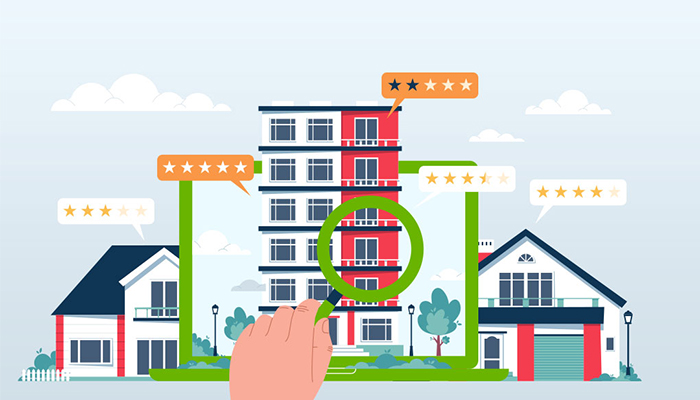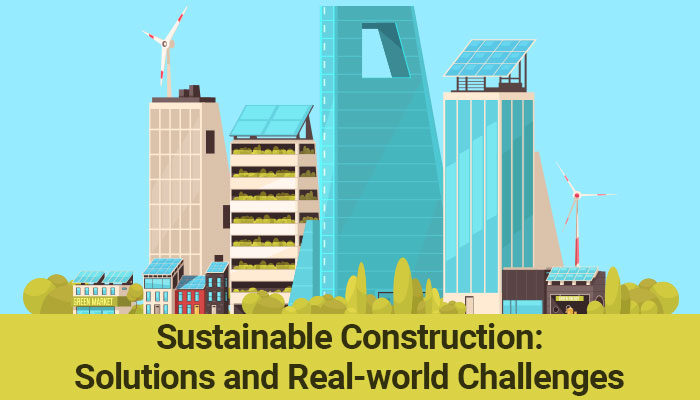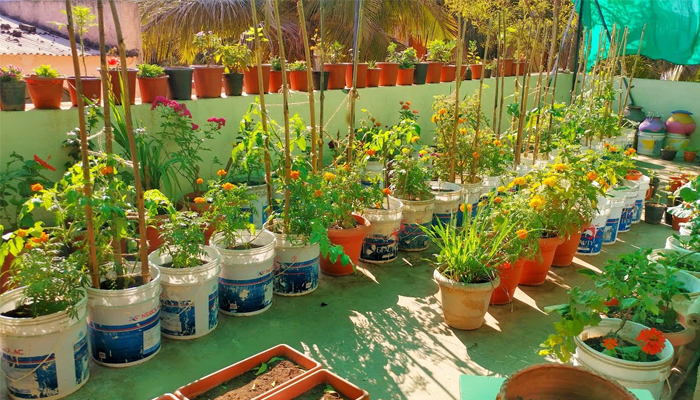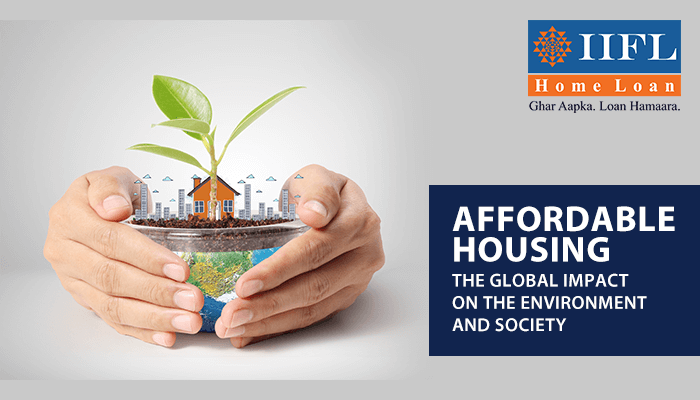Policy Reforms Aiding Green Affordable Housing Adoption in India

In today’s world, where warnings about climate change and the depleting environment are alarming and sensitized everywhere, the most used term we hear is ‘green’. Green is nonetheless a term used to describe a vision or an idea we all want to achieve in hopes of a sustainable planet. While a green planet is required for the healthy growth of the biosphere, housing or shelter is important for the growing population. Thus, Green Housing re-imagines housing to be sustainable, affordable, and environmentally friendly in its building process and outcome, with an envisioned house that not only uses recyclable or waste building materials but also reduces its carbon footprint on the planet.i
India is currently facing a crisis of energy resources, with the country producing vast carbon emissions every day due to the overly increasing population and constant infrastructure development. These processes are adversely affecting the planet, adding to the problem of climate change. While development is necessary as the way forward, adopting certain green methods can immensely change these effects. Firstly, the site or landscape has a huge impact on the construction, thus acknowledging the existing landscape, soil and trees is crucial. Secondly, architecture and construction play a vital role in ensuring a building’s response to the natural elements. Thus, using net-zero or recyclable waste building materials along with the shading devices and placement of windows and doors can transform a house. Thirdly, implementing strategies such as rainwater harvesting, solar panels, and green terraces ensures that once it is inhabited, the building lives on to give to the planet and minimise carbon emissions.
While these methods ensure that housing choices responds to planet, the government is also working towards policies aiding the housing sector to easily adapt to these crucial changes. Schemes like ‘Angikaar’ launched in October 2019 aims to bring awareness to the topic of change management and conservation. While, policies like ‘Swachh Bharat’, ‘Ujala’, and ‘Ayushman Bharat’ target specific sectors of resources and aim to bring change at a neighbourhood level.ii Much larger schemes regarding housing have also been introduced, such as the Rajiv Awas Yojana(RAY) which has a vision of a slum-free India and Pradhan Mantri Awas Yojana (PMAY)iii that provides many subsidies to the economically weaker section to give them equal opportunities of healthy living standards.iv These schemes target the socio-economic disparity of the country at a larger scale making goals like ‘Housing for All’, a working vision to bring equity within the nation. Although, policies are a way of bringing awareness amongst the citizens, institutional bodies such as GRIHA (Green Rating for Integrated Habitat Assessment)v and TERI (The Energy and Resource Institute)vi work towards the study and research to innovate and bring about change through science and technology. Green ratings and evaluations are provided for any development to ensure that the planet is kept as a priority. Laws as well have become stricter to ensure respectful management of ecological construction sites that align with sustainable development goals. Thus, these policies become a ray of hope to educate the public and bring a more sustainable change.
Having goals and foresight provides an outline and sets the course for action to take place. Therefore, Sustainable Development Goals (SDGs) recognised by the United Nations are steps in the direction of problems identification and working in unity to promote a healthier planet for all. SDG 7 works to promote affordable and clean energy while SDG 11 is aimed at sustainable cities and communities, these both again work with SDG 12 and 13 which are to promote responsible consumption and production and climate action. These become the vision for the citizens who are the changemakers to cultivate habits of conservation and recyclingvii. With housing also, a fundamental right for all, an approach to harmonious living with the planet is primary. Hence, providing green housing at an affordable range allows the citizens an opportunity to have healthy and comfortable living standards and positively affects the eco-cycle. Here, the role of a designer or urban planner is important to ensure that climate and resources are taken care of and available for all.
At the city-scale level, planning plays a role in ensuring that adequate housing is accessible to the masses and becomes the new normal. Policies and strategy planning by the government could aid in providing a holistic approach and promote faster adoption. Once at a city level, changes are observed, a neighbourhood or community level housing should transform into adopting water and energy conservation methods. With more and more people changing to better building materials, climate-friendly architectural practices, and other conservation methods, the impact would be greater than ever and bring about a positive transformation. We, as informed citizens, need to know the benefits and effects these methods have and promote to educate others.
India, a land of opposites where disparity exists with growth, poverty lives with the development, adoption of green housing is a working goal under an umbrella of visions and dreams. The key steps are awareness, education, and implementation amongst the public. The stakeholders need to be addressed and made aware of the market potential and relevance of green housing. A major drawback in the market for affordable green housing is the lack of funding. The National Housing Bank (NHB) has initiatives like the Go-Green Initiative that promote the green residential sector. Under NHB, programs like SUNREF affordable green housing provide loans and incentives to educate more people about holistic human development with the planet.viii The public needs to understand the importance of constructing and maintaining green buildings to adopt a conservationist lifestyle. If these changes are not taken at this stage, the resources we enjoy today may be exhausted for the future generations. We, humans, as a community can bring about a stronger change if our core values and habits transform into doing meaningful things for the world.
Hence, housing is a shelter required by all citizens but green housing is a necessity for the planet and mankind. The government is working towards the promotion of policies, but citizens need to educate themselves and spread awareness for a community to form. Stakeholders can play a key role in making this change effective by investing in the right sectors and promoting the market. Using locally sourced waste materials, minimising the usage of air conditioning, and growing more plants are some small steps to ensure a green home. While, at a larger scale, implementation with stricter laws, guidelines, and frameworks concerning urban planning and design can allow a smart city to flourish and grow. Incentives need to be taken by the government to promote and make green housing a more affordable and accessible option for all. Planners and designers need to use this opportunity to educate the citizens about their impact on society at large and make designs benefiting the life cycle of the planet. With a change in every action and thought, we could give back and preserve our valuable resources. Moving towards a future of eco-friendly housing and sustainability, the three-step strategy plan which includes awareness, education, and implementation allows all to transform and make way for a planet we all have the vision for. An India where housing isn’t a disparity but a shelter for all with comfort and life, making the planet greener, safer and balanced.
Sources:
i Limited, A. F. (n.d.). Home. What is green home, Complete process to build a green home. Retrieved October 14, 2022, from https://www.aavas.in/blog/definition-of-affordable-green-housing
ii IIFL Finance. (1970, January 3). All about the ANGIKAAR campaign - what is it, how does it work, benefits & more. IIFL Finance. Retrieved October 25, 2022, from https://www.iifl.com/blogs/all-about-angikaar-campaign-what-it-how-does-it-work-benefits-
iii HFA(urban). PMAY. (n.d.). Retrieved October 25, 2022, from https://pmaymis.gov.in/
iv Mohua. (n.d.). Retrieved October 25, 2022, from https://mohua.gov.in/
v Home: Green rating for integrated habitat assesment. Home | Green Rating for Integrated Habitat Assesment. (n.d.). Retrieved October 25, 2022, from https://www.grihaindia.org/
vi Creating Innovative Solutions in Energy, Environment and sustainable development to accelerate India's transition to a cleaner future. TERI. (n.d.). Retrieved October 25, 2022, from https://www.teriin.org/
vii United Nations. (n.d.). The 17 goals | sustainable development. United Nations. Retrieved October 24, 2022, from https://sdgs.un.org/goals
viii Codrops. (n.d.). National Housing Bank. Retrieved October 25, 2022, from https://nhb.org.in/en/
Additional Sources:
-
Cao, X., Zhao, T., & Xing, Z. (2022, February 16). How do government policies promote green housing diffusion in China? A complex network game context. International journal of environmental research and public health. Retrieved October 14, 2022, from https://www.ncbi.nlm.nih.gov/pmc/articles/PMC8871890/
-
admin1. (2022, July 28). A state-wise Insight of India's building sector- policy and strategy mapping. Alliance for an Energy Efficient Economy. Retrieved October 14, 2022, from https://aeee.in/a-state-wise-insight-of-indias-building-sector-policy-and-strategy-mapping/
-
Making the case for green affordable housing. Times of India Blog. (2021, June 25). Retrieved October 14, 2022, from https://timesofindia.indiatimes.com/readersblog/tenementtreasures/making-the-case-for-green-affordable-housing-34227/
-
Green affordable housing - IGBC green affordable housing in India. IGBC. (n.d.). Retrieved October 14, 2022, from https://igbc.in/igbc/redirectHtml.htm?redVal=showAffordableHousingnosign
Tags
Disclaimer: The information contained in this post is for general information purposes only. IIFL Home Finance Limited (including its associates and affiliates) ("the Company") assumes no liability or responsibility for any errors or omissions in the contents of this post and under no circumstances shall the Company be liable for any damage, loss, injury or disappointment, etc. suffered by any reader. All information in this post is provided "as is", with no guarantee of completeness, accuracy, timeliness, or of the results, etc. obtained from the use of this information, and without warranty of any kind, express or implied, including, but not limited to warranties of performance, merchantability, and fitness for a particular purpose. Given the changing nature of laws, rules, and regulations, there may be delays, omissions, or inaccuracies in the information contained in this post. The information on this post is provided with the understanding that the Company is not herein engaged in rendering legal, accounting, tax, or other professional advice and services. As such, it should not be used as a substitute for consultation with professional accounting, tax, legal or other competent advisers. This post may contain views and opinions which are those of the authors and do not necessarily reflect the official policy or position of any other agency or organization. This post may also contain links to external websites that are not provided or maintained by or in any way affiliated with the Company and the Company does not guarantee the accuracy, relevance, timeliness, or completeness of any information on these external websites. Any/ all (Home/ Loan Against Property/ Secured Business Loan/ Balance Transfer/ Home Improvement Loan/ NRI Home Loan/ Home Loan for Uniformed Services) loan product specifications and information that may be stated in this post are subject to change from time to time, readers are advised to reach out to the Company for current specifications of the said (Home/ Loan Against Property/ Secured Business Loan/ Balance Transfer/ Home Improvement Loan/ NRI Home Loan/ Home Loan for Uniformed Services) loan.
 Login
Login






















